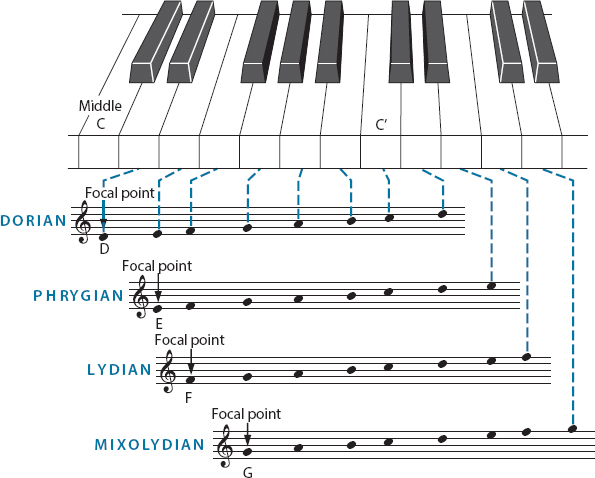Characteristics of Plainchant
Plainchant comes in many genres, or types, differing widely in melodic style depending on their religious function. Some plainchants consist of simple recitation on a monotone, with only slight deviations from that single pitch; in monasteries, the entire set of 150 psalms had to be sung in this fashion every week. (That in itself is a lot of sung prayer.) Other chants are intricate songs with hundreds of notes ranging well over an octave. And still others count as the first real tunes that are known in Western music.
In whatever style or genre, plainchants share two characteristic features. First, they are typically nonmetrical; they have no clearly established meter, and therefore the rhythm is free. A distinctive beat is lacking in this music.
Second, plainchant is not constructed in the major/minor system, but according to one of the medieval modes. (Medieval means “from the Middle Ages.”) As discussed in Unit I, the original scale of Western music was the diatonic scale, equivalent to the “white-
Musicians of the Middle Ages organized the scale differently — not around C or A, but around D, E, F, or G. The result was music in other modes, different from the modern major or minor. These modes were given Greek names, since medieval scholars traced them back to the modes of ancient Greek music, as discussed by Plato and others. The medieval modes are these:

The essential difference between the modern major and minor modes comes in the different arrangement of half steps and whole steps in their scales. The medieval modes provide four additional arrangements. (Compare the preceding diagram with the one on page 31.) So medieval tunes sound different from modern tunes; and since there are more possible arrangements, medieval plainchant is actually richer and more subtle than music in the major/minor system. The artistic effect of plainchant — music without harmony or definite rhythm — is concentrated in melody built on this rich modal system.